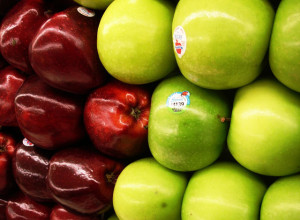13 Oct Dirty Dozen
Studies in recent years have shown the unintended side effects of consuming food-containing pesticides include a host of health issues for humans, especially in children.
The use of pesticides in growing food has been linked to several cancers, as well as disorders to the immune, endocrine and nervous and reproductive systems.

October sees a harvest of late, few fruits and vegetables. Soon we’ll be slightly limited to the amount of produce at its seasonal peak. The cost of organic produce can be much higher than conventional (nonorganic) fruits and vegetables. While it’s good to enjoy the current season’s bounty, there may be a few more items from the store’s produce section added to our grocery lists while we wait for Spring to bring organic garden and farmer’s market fare back to our tables.
While The U.S. Environmental Protection Agency offers limited data to American consumers, organizations like the Environmental Working Group are here to help, publishing annual lists advising shoppers what conventional produce to avoid and what may safer. The EWG Shopper’s Guide to Pesticides in Produce outlines fruits and vegetables that the EPA tests as detecting the most residue of hazardous pesticides.
Here is a list of the 2014 Dirty Dozen fruits and vegetables to avoid in conventional form:
Apples
Strawberries Grapes
Celery
Peaches
Spinach
Sweet bell peppers
Nectarines (imported)
Cucumbers
Cherry tomatoes
Snap peas (imported)
Potatoes
Plus…
Hot peppers
Kale/collard greens
EWG’s The Clean Fifteen – conventional produce least likely to hold pesticide residues:
Avocados
Sweet corn
Pineapples
Cabbage
Sweet peas (frozen)
Onions
Asparagus
Mangoes
Papayas
Kiwi
Eggplant
Grapefruit
Cantaloupe
Cauliflower
Sweet potatoes
For more information and to read research findings on all environmental health issues, visit http://www.ewg.org.

